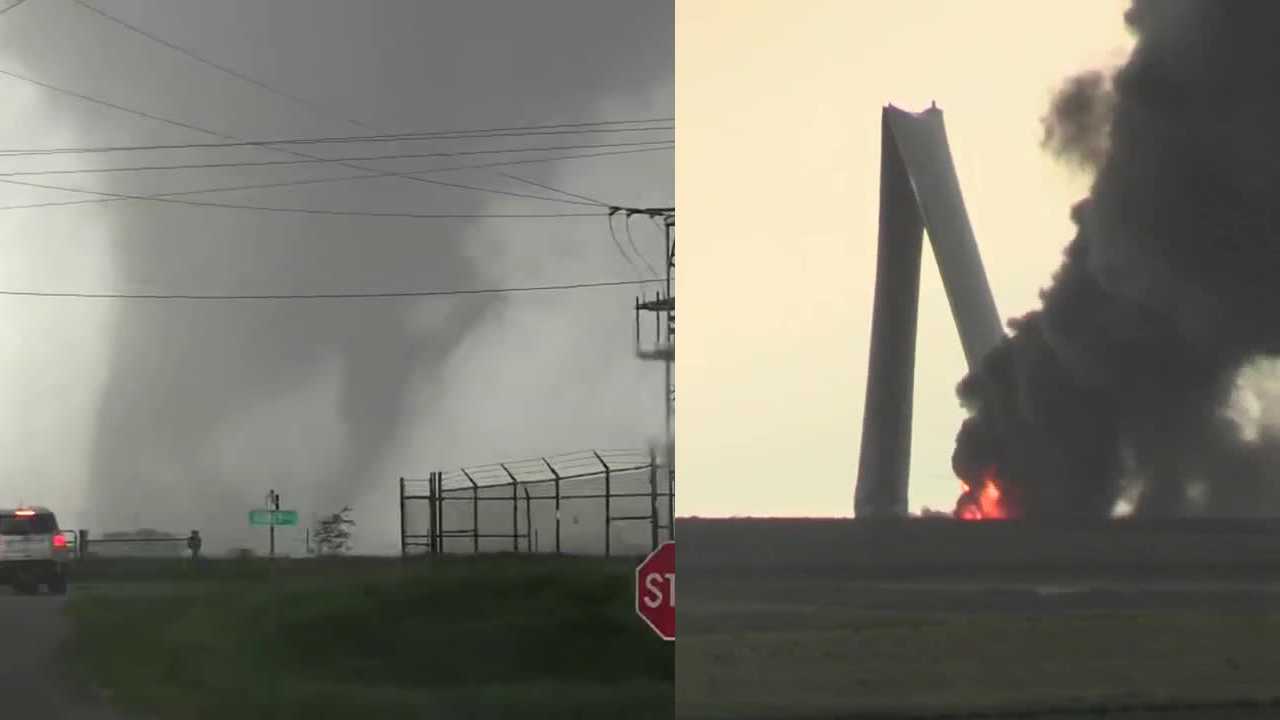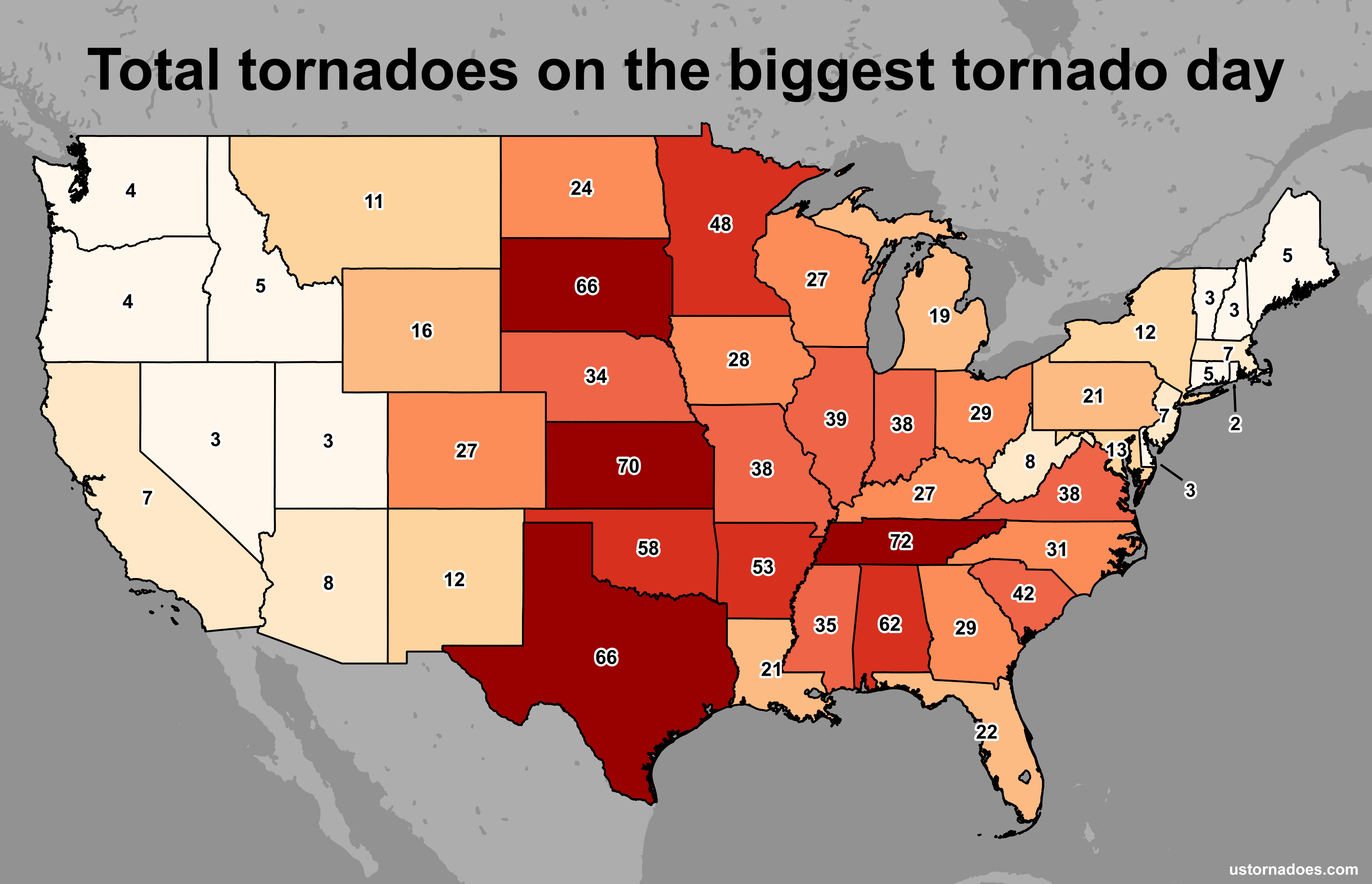Overview of Tornado Activity in Iowa: Tornado In Iowa Today

Tornado in iowa today – Iowa has experienced a number of tornadoes in recent years, with varying degrees of severity. In 2022, the state saw 59 tornadoes, including several that caused significant damage and loss of life. The geographical distribution of tornadoes in Iowa is somewhat varied, with some areas being more vulnerable than others. The western and central parts of the state are typically more prone to tornadoes, due to their location in Tornado Alley.
The tornado that struck Iowa today is a reminder of the devastating power of these storms. Iowa is no stranger to tornadoes, with an average of 50 tornadoes reported each year. To learn more about the history and impact of tornadoes in Iowa, visit iowa tornados . Today’s tornado is a tragic reminder of the importance of being prepared for these storms.
Vulnerable Areas
The most vulnerable areas in Iowa are those that are located in the western and central parts of the state. These areas are often hit by tornadoes that form along the dry line, a boundary between moist and dry air masses. The dry line is a common feature in the Great Plains, and it can produce severe thunderstorms that can spawn tornadoes.
The wrath of nature has descended upon Iowa today, as tornadoes tear through the state. While such occurrences are not uncommon, the intensity and frequency of these storms have prompted a closer examination of the phenomenon known as iowa tornadoes . The unique geography and weather patterns of the region contribute to the formation of these destructive forces, making Iowa a hotspot for tornado activity.
The devastation caused by these storms serves as a sobering reminder of the power of nature and the importance of preparedness.
Causes and Impacts of Tornadoes

Tornadoes are violent, rotating columns of air that extend from the base of a thunderstorm cloud to the ground. They are a common occurrence in Iowa, especially during the spring and summer months.
Today, Iowa has been hit by a devastating tornado, causing widespread damage and leaving many in need of assistance. The storm, which touched down in the western part of the state, has left a trail of destruction in its wake, prompting the governor to declare a state of emergency.
For more information and updates on the tornado in Iowa, please visit tornado in iowa .
The meteorological conditions that lead to tornado formation in Iowa include:
- Strong updrafts: These are rising currents of air within a thunderstorm cloud that can reach speeds of over 100 miles per hour.
- Wind shear: This is a difference in wind speed and direction between different levels of the atmosphere. Wind shear can cause the updrafts to rotate, which can lead to tornado formation.
- Instability: This is a measure of how easily the air can rise and fall. Unstable air is more likely to produce tornadoes.
There are different types of tornadoes that can occur in Iowa, including:
- Weak tornadoes (EF0-EF1): These tornadoes have wind speeds of up to 110 miles per hour and can cause damage to trees, power lines, and structures.
- Strong tornadoes (EF2-EF3): These tornadoes have wind speeds of up to 165 miles per hour and can cause significant damage to buildings and infrastructure.
- Violent tornadoes (EF4-EF5): These tornadoes have wind speeds of over 165 miles per hour and can cause catastrophic damage.
Tornadoes can have a devastating impact on communities. They can cause damage to infrastructure, property, and human life. The potential impacts of tornadoes include:
- Property damage: Tornadoes can destroy homes, businesses, and other buildings. They can also damage power lines, roads, and bridges.
- Infrastructure damage: Tornadoes can damage or destroy critical infrastructure, such as hospitals, schools, and emergency response facilities.
- Human life: Tornadoes can cause serious injuries or death. The most common injuries are caused by flying debris.
Tornado Safety and Preparedness
Tornadoes can be devastating, but there are steps you can take to stay safe during a tornado warning. The most important thing to do is to have an emergency plan in place and practice tornado drills.
Seeking Shelter
When a tornado warning is issued, the best thing to do is to seek shelter in a sturdy building. If you are in a home, go to the basement or an interior room on the lowest floor. If you are in a school or office building, go to a designated safe area. If you are in a mobile home, get out and go to a sturdy building.
Avoiding Windows, Tornado in iowa today
Stay away from windows during a tornado warning. Windows can be shattered by the force of the wind, and flying glass can cause serious injuries.
Staying Away from Open Areas
Stay away from open areas during a tornado warning. Tornadoes can lift debris and objects into the air, and these objects can be deadly.
Tornado Forecasting and Tracking
Tornadoes are notoriously difficult to predict, but meteorologists have developed a number of tools and techniques to help them forecast and track these storms. Doppler radar is one of the most important tools used to detect tornadoes. Doppler radar can detect the rotation of the air within a storm, which can indicate the presence of a tornado. Meteorologists also use satellite imagery to track the movement of storms and to identify areas that are at risk for tornadoes.
When a tornado warning is issued, it means that a tornado has been spotted or is indicated by radar. A tornado watch means that conditions are favorable for tornadoes to develop. It is important to take shelter immediately when a tornado warning is issued. You should go to a basement or storm cellar, or to the lowest level of your home. If you are outside, you should lie down in a ditch or other low-lying area and cover your head with your hands.
Staying Informed About Tornado Warnings and Advisories
There are a number of ways to stay informed about tornado warnings and advisories. You can listen to the radio or television, or you can check the National Weather Service website. You can also sign up for text or email alerts from the National Weather Service. It is important to have a plan in place for what you will do if a tornado warning is issued.
Today’s tornadoes in Iowa have left a trail of destruction, with Greenfield being one of the hardest-hit areas. To get a better understanding of the damage, refer to this greenfield ia map . The map provides a detailed overview of the affected areas, helping you visualize the extent of the devastation.
As the cleanup efforts continue, this map will serve as a valuable resource for relief organizations and individuals seeking to help those in need.
Tornadoes have wreaked havoc in Iowa today, leaving a trail of destruction in their wake. With the threat of further tornadoes looming, residents are urged to heed tornado warnings and take necessary precautions. The National Weather Service has issued numerous tornado warnings for various counties in Iowa, and residents should remain vigilant and monitor weather updates closely.